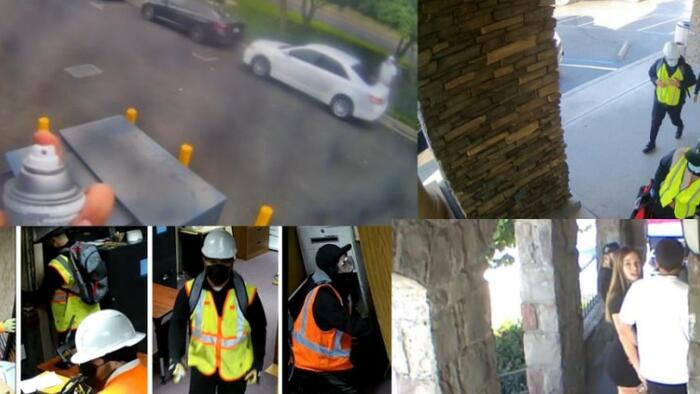In California, federal prosecutors have unveiled a major case against ten individuals, primarily Chilean nationals, for their alleged involvement in a sophisticated scheme to steal millions from banks and ATMs using counterfeit identification. This operation reportedly yielded at least $2.5 million in thefts throughout 2024, with certain heists netting as much as $250,000 in a single incident. According to reports from the Mercury News, the group’s tactics included renting Airbnbs for operational bases near their planned targets, utilizing a clandestine car rental service, and employing various tools and disguises to carry out their crimes. Their brazen methodology involved spray-painting security cameras, utilizing blowtorches and power tools to breach ATMs, and camouflaging themselves as construction crews, complete with sledgehammers, crowbars, and cellphone jammers.
One of their more audacious thefts took place on September 18, when they illegally accessed a Wells Fargo ATM cash room by drilling through the wall of an adjacent pet spa, leading to a significant loss of $247,000. Despite their attempts to maintain a low profile, the FBI successfully traced their activities, revealing a digital footprint that included linked vehicles used during the crimes. A significant breakthrough occurred when investigators identified a Chevrolet Suburban associated with an underground rental service in West Hollywood, rented under dubious circumstances. This vehicle was linked to “Gordito,” the alleged mastermind behind the operation, who was later confirmed to be Alex Moyano-Morales, carrying fraudulent identification from Colombia and the United States.
Upon identifying Moyano-Morales, the FBI monitored his cellphone activity and discovered a network of associates who had rented nearby Airbnbs close to various heist sites. Surveillance footage from one of these rentals in Turlock showcased the group unloading burglary tools, providing crucial evidence. Moyano-Morales, along with nine other accused individuals—including Maite Celis-Silva, Erik Osorio-Olivarez, and Pablo Valdez-Rodriguez—are charged with organizing thefts in several cities, including Modesto, Citrus Heights, Fresno, and Anaheim, while also being investigated for similar crimes in larger urban areas like Los Angeles, San Diego, and Houston. The group reportedly expanded their criminal activities into Oregon as well.
The recent arrest of four members at an Airbnb in Seattle revealed $20,000 in cash, alongside tools associated with their burglary operations. During the arrest, one suspect, Parada-Munoz, allegedly resisted apprehension while the other members attempted to flee in a Ford Fiesta previously tied to the heists. This group’s operations are part of a broader pattern of high-stakes thefts executed by South American criminals in the United States. Recent reports indicated a series of well-coordinated, high-value burglaries, reminiscent of Hollywood heist films, demonstrating the sheer scale and audacity of these criminal operations.
Insights from the Jewelers’ Security Alliance (JSA) and Jewelers Mutual suggest that jewelers and luxury retailers across the U.S. have suffered substantial losses due to an increase in these types of burglaries. Scott Guginsky, JSA’s vice president, highlighted the widespread nature of these thefts, noting how they span from New York to Texas, with some incidents incurring losses in the millions. Howard Stone, from Jewelers Mutual, remarked on the trend of increasingly complex crimes, indicating they began gaining attention in June. The JCK report further emphasized that these gangs plan meticulously, obtaining detailed intelligence on their targets prior to executing their heists.
Despite the alarming nature of these episodes, it remains unclear whether the recent bank and ATM thefts connected to the Mayo-Morales group are linked to the broader wave of burglaries orchestrated by South American gangs. What is evident, however, is the evolving landscape of organized crime in the United States, marked by sophisticated planning, a lack of centralized leadership, and a troubling uptick in the scale of losses experienced by victims. As law enforcement agencies continue to investigate and apprehend individuals involved in these crimes, the need for enhanced security measures across vulnerable sectors becomes increasingly urgent. The emergence of these criminal networks reflects a pressing challenge for authorities seeking to protect financial institutions and retail establishments from persistent threats posed by organized theft rings.

